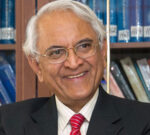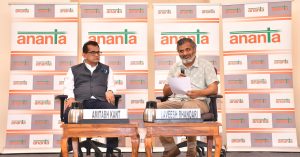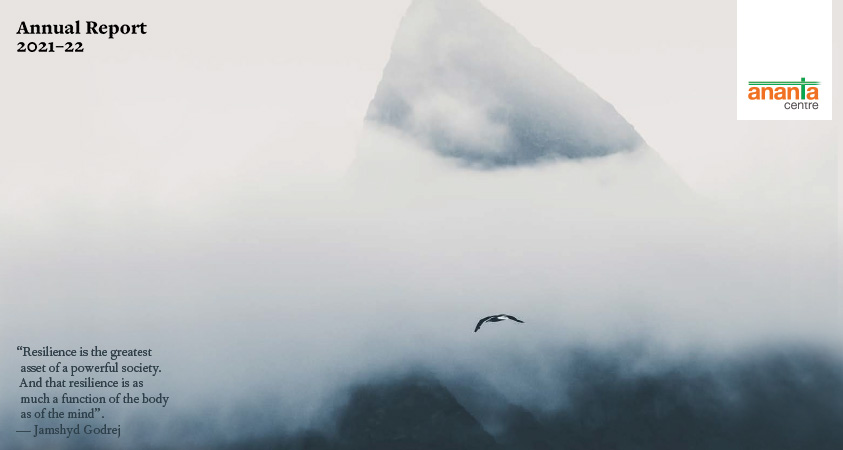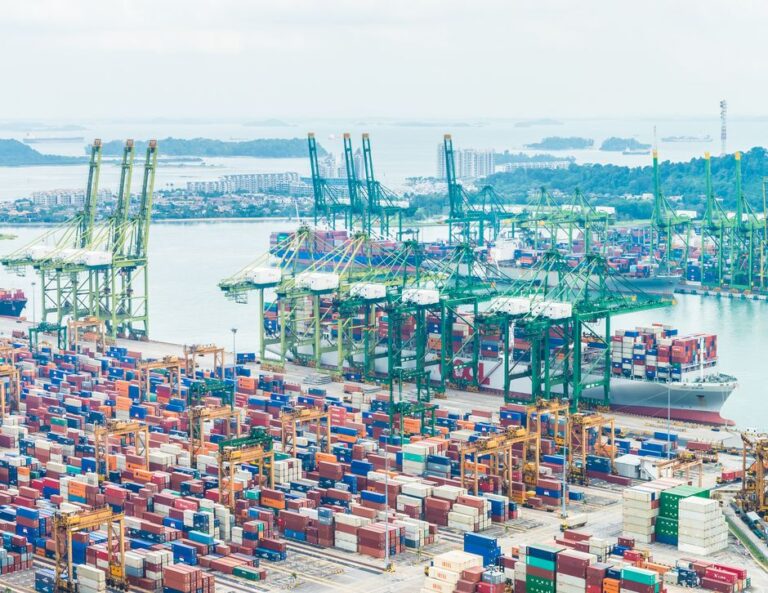Overview
• Reflections on post 2020 India-Russia relations
• FM Lavrov’s Indo-Pacific comments
• The impact of Russia-China relations
• The Indo-Pacific dimension
• The US-China-Russia triangle
• India’s “strategic choice”
• Obsolete templates need discarding
• The summit
• The Outlook
Reflections on post 2020 India-Russia relations
The narrative of dilution and drift in India-Russia relations has been prevalent in Indian political, official, business and media circles over a few years now. Regular meetings of the leaders of the two countries, at their annual bilateral summits and on the margins of various multilateral summits, as well as announcements of cooperation projects in the defence and hydrocarbons sectors have generally succeeded in keeping this narrative somewhat in check. 2019 was one of the better years for the bilateral relationship, with multiple summit-level meetings, conclusion of defence contracts (facing down the threats of US sanctions that loomed in 2018), Russia’s support for India on Article 370 and CAA (breaking ranks with China at the UN Security Council) and the launch (at the Vladivostok summit in September 2019) of an ‘Act Far East’ initiative, including an Indian US$1 billion line of credit for projects in the Russian Far East and agreement to open a maritime commercial corridor between Vladivostok and Chennai.
It was more of a roller coaster ride in 2020. The Covid pandemic obviously restricted visits and direct interactions in the first half of the year. They recommenced in June, with the Defence Minister attending the Russian “Victory Day” celebrations (marking victory in the Second World War). A tri-services Indian Armed Forces contingent participated in the military parade on the occasion. The Minister announced that his Russian counterparts had assured him of speedy (even expedited) execution of ongoing arms contracts (even as the India-China tensions in Ladakh intensified). The media reported that talks included fast-tracking deliveries of the S-400 air defence system. There were further bilateral meetings in September of the Defence Ministers and the Foreign Ministers during their visits to Moscow for SCO and BRICS meetings. PM Modi called President Putin in July to congratulate him on the success of the Russian referendum on constitutional amendments. President Putin was one of the first world leaders to greet PM Modi on his 70th birthday in September. The Kremlin readout of both conversations stressed the cordiality of exchanges.
At the same time, the intensification of the India-US engagement in the latter half of the year, signalled by the 2+2 meeting of Foreign and Defence Ministers, greater intelligence-sharing, military-to-military interactions and the heightened rhetoric over the Quad dialogue, now at the level of Foreign Ministers, clearly aroused concerns in Russia about its impact on India-Russia relations. The Russians felt that India’s frenetic diplomacy, to sensitize the world on the Chinese threat, focussed on the US and Europe, excluding Russia. Russian diplomats found Indian negotiators overly careful about US sensitivities while negotiating the text of documents for the SCO and BRICS summits, which were of importance to President Putin, since he chaired these summits.
In any event, public utterances by President Putin and Foreign Minister Lavrov towards the end of the year provoked a wider public debate than ever before in India on the relevance and future of the India-Russia relationship. This issue of the Review looks at the issues involved.
FM Lavrov’s Indo-Pacific comments
In hard-hitting remarks at a meeting of the Russian International Affairs Council on December 12, Lavrov described India as “an object of the Western countries’ persistent, aggressive and devious policy … trying to engage it in anti-China games by promoting Indo-Pacific strategies, the so-called “Quad”, while at the same time attempting to undermine [Russia’s] close partnership and privileged relations with India”. He cited the “very tough pressure” the US is exerting on India on military-technical cooperation with Russia, as part of a new ploy of the “US-led West”: to defer their focus on Russia and China, and first “draw all others into a unipolar world by any means possible”.
Lavrov had said something similar in Vietnam in February 2019, without attracting much attention in India (see Review – 2/19). This time, both the phraseology and the timing triggered indignant reactions. Comments in the media by journalists, academics and former diplomats berated Lavrov for wilfully ignoring India’s strategic challenges. Some declared that Russia could no longer be considered a friend of India. Others argued heatedly that it could not effectively be one, as a patently junior partner of China, under tremendous political pressure from the West and an already weak economy, ravaged further by Covid. The narrative of India-Russia divergences acquired further momentum with a story in the online news portal, The Print, that the India-Russia summit – which has an unbroken tradition over 20 years – was not held in 2020 due to differences over closer India-US relations and India’s deepening Indo-Pacific engagement. The Indian Ministry of External Affairs officially clarified that the postponement was solely due to Covid concerns. The Russian Embassy in Delhi also confirmed this in a media conference.
The Russian embassy also attempted to soften Lavrov’s comment on India and the Indo-Pacific. A Russian diplomat clarified that Russia does not have issues with the “Indian vision” of the Indo-Pacific: “we understand India’s concept of Indo-Pacific …. there is no unified vision for Indo-Pacific currently … many countries promote this vision … some are non-inclusive, while India’s concept of Indo-Pacific is inclusive.”
This band-aid could not heal the wound, caused by a widespread assessment that Lavrov’s remarks were ill-timed and insensitive. His fulminations about the US and other western countries reflect the state of Russia’s relations with these countries, but inclusion of India in this tirade does not take into account the fact that India has publicly tried to maintain some distance from western policies towards Russia. The comment about drawing India into “anti-China games” is an extraordinary inversion of cause and effect, amidst the ongoing standoff. The insinuation that India is unwillingly being dragged into an arrangement against its perceived national interests is somewhat condescending. Above all, a “special and privileged strategic partnership” merits a discussion of its problems in camera, rather than a public airing by the Foreign Minister of one of the partner countries. Whatever Russia may feel about an Indian “tilt” away from Russia, no senior Indian official or Minister has deviated from public reiterations of India’s commitment to the partnership with Russia.
Lavrov’s remarks strengthened the already growing conviction in India (and, for that matter, in Russia) that the India-Russia relationship needs review, repair and recalibration, in the light of today’s realities.
The impact of Russia-China relations
Russia-China relations would be at the core of such a review. These relations were described by President Putin in his New Year greetings to President Xi as being “at their highest level in history”. Speaking to a Chinese journalist in October, he was expansive about the relationship, quoting (among other areas) “significant military-technical cooperation involving sharing of technologies” and adding that it is boosting the defence potential of the Chinese army, “which is in the interest of both Russia and China”. Asked further if a military alliance is possible, he responded that it was not currently on the agenda, but could not be ruled out in the future. These remarks are startling, whatever their real import: a statement of conviction or a warning to the West or a reassurance to China after accelerating arms supplies to India or, indeed, a message to India, which found no mention in that press interaction (see Review, 10/20). In the past, Putin has publicly declared that Russia does not transfer to any country the level of military technologies that it transfers to India. His more recent remarks about China underline the importance of periodical reality checks on this aspect, as geopolitical realities change.
The Indo-Pacific dimension
India’s Indo-Pacific engagement, characterized by the Quad dialogue and the Malabar naval exercises are the flip side of the Russia-China coin. Russia sees this engagement, as Lavrov’s strong remarks made abundantly clear, as a march towards an Indian quasi-alliance with the US, which would disengage India from Russia. The Russian refrain that India’s Indo-Pacific concept is aimed at containing China and Russia has repeatedly been addressed by India, including at the Modi-Putin summit in Vladivostok. India’s message is that efforts to prevent Chinese hegemony in the Indo-Pacific region should be in Russia’s interest as well, if it sees itself as an independent player (free from China’s coattails) in the Pacific region. The initiative to strengthen Indian presence in the Russian Far East and for the Vladivostok-Chennai maritime corridor reinforced this message. In their media statements, both Modi and Putin said they had discussed security in the Indo-Pacific region (though Putin said security in the Indian and Pacific Oceans).
The US-China-Russia triangle
Both these tracks will inevitably be influenced by US behaviour. If the Biden Administration tones down the rhetoric against the “Chinese Communist Party”, and dilutes the military posture of US’ Indo-Pacific strategy, it would subtly alter the character of the Quad dialogue. The Chinese media forecasts this trend, drawing attention to Biden’s campaign assertions that Russia constitutes the biggest threat to US security, while China has been variously described as adversary or competitor. The NATO 2030 strategy paper, released after the US Presidential elections in November, partially supports this analysis: it says NATO allies “will continue to seek relations with China, build economic and trading ties and seek to work with China on issues such as climate change and biodiversity …. China’s actions are central to … tackling global challenges such as the Sustainable Development Goals …” A Global Times editorial draws the conclusion that “during the Biden era, the US will focus on pressuring Russia, and China will have a chance to breathe”.
This is exactly as China would like it to be. As veteran Chinese diplomat Fu Ying hinted in an essay in Foreign Affairs in early 2016, the configuration of the US-Russia-China triangle that suits China best is that of a scalene triangle, where the distance between the US and Russia is maximum, that between Russia and China is the shortest, and the US-China arm is of intermediate length. This is the configuration that gives China greatest leverage with both the US and Russia (and, as the Chinese argue, would leave India out in the cold). This is another trend India needs to watch closely.
India’s “strategic choice”
The Russia-China partnership feeds a common refrain among analysts that India should make a strategic choice – to move away from Russia to a much closer partnership with the US. In a series of farewell speeches and interviews, the outgoing US Ambassador to India delivered the same message to receptive audiences. Such a clean break may be an elegant solution in theory, but presents many practical challenges.
Firstly, the India-US partnership reflects major convergences of interests of the two countries, including shared perspectives in the maritime domain (the Indo-Pacific), but the convergence is not quite so close in continental Eurasia, where India has important strategic and security interests – in Central Asia, West Asia and Afghanistan.
Secondly, our interests in Central Asia and Afghanistan dictate our presence in structures like the SCO and the connectivity projects that link up to them like the International North South Trade Corridor through Iran. A break with Russia means vacating this space to a Russia-China condominium (with Pakistan in tow), with potentially grave consequences for our security.
Thirdly, Russian/Soviet weapons systems and equipment account for about 60% of the inventory of our armed forces. It is a falling percentage, as India seeks to diversify and indigenize, but the process cannot be rushed without developing significant defence vulnerabilities. An air defence system like the S-400 has no substitute from elsewhere, as even US arms experts acknowledge. There are other contracts, shrouded in secrecy for obvious reasons, that are difficult to substitute. As India’s imports of sophisticated weapons systems from the West increase, the problem of inter-operability will require innovative technological and structural approaches, but a sudden and total shift is not a real option. Changing horses mid-stream is always hazardous, but it is fatal if the horses are not abreast of each other.
Fourthly, the opportunity cost. Indian hydrocarbons investments in Russia are proving lucrative. Cooperation in nuclear energy is developing well. Covid has brought home the importance of securing and diversifying supplies of critical raw materials for the economy. As the world’s most abundant source of natural resources, Russia offers opportunities for Indian investment and buyback arrangements of important resources. Participation in the Eurasian Economic Union can be an economic force multiplier because of the opportunities available in Central Asia.
An objective review of India-Russia relations needs to factor in these considerations, but also the overall context of the strategic direction of each of the two countries in the emerging geopolitical realities. Complex, cross-cutting political, economic and regional interests lead India to re-evaluate its strategic alignments to preserve its national interests and promote its global ambitions. This reevaluation should also be shaped by an objective judgement of Russia’s foreign policy priorities in its present situation: whether India has the same place in them as in 2000, when we launched the strategic partnership that has has been embellished with more adjectives along the way.
Obsolete templates need discarding
Recent developments have again exposed the reality that the India-Russia relationship still operates largely on the template of the Cold War days, with only marginal acknowledgement of the changed circumstances. The dominant theme is government-to-government interaction. This worked well for defence cooperation, since the defence industries of both countries were mainly owned and directed by the governments. As the private sector expands its role in India’s defence industry and indigenization is emphasized, both sides have struggled to adjust to the new requirements. Governments’ efforts to negotiate commercially viable joint ventures have been clumsy (to put it mildly); this explains why the projects for manufacture of assault rifles and helicopters (hailed in 2014 as the first defence Make in India project) have not taken off, though both are of great interest to the Indian armed forces. Cooperation in hydrocarbons has flourished because the concerned PSUs on both sides brought a hard-headed commercial approach to the negotiations. But the elaborate government to government economic dialogue architecture has had little impact on bilateral trade and investments, despite the periodical exhortations by the leaders and the obvious opportunities. Big business groups in India and Russia (with a few exceptions) have kept their business away from each other, citing difficult business conditions. Much of Indian business continues to believe that Russia still has the clunky, dated technologies of the Soviet days. Some Indian companies burnt their fingers badly trying to do business in the Yeltsin era. In the absence of much travel or media exposure, the image of a lawless Russia with poor business ethics (drawn from the English-language western media) prevails in Indian media, academia and business communities. It is the same in Russia, where officialdom, media, business and academia have a thinly-veiled condescending view of India: they cannot bring themselves to recognize the political, economic and technological strides India has made in recent decades.
There is, therefore, a disconnect between the Modi-Putin proclamations of shared interests and economic opportunities and the outlook of the government and business entities that have to pursue them. Modi and Putin discuss the Indo-Pacific in Vladivostok, but the Russian Foreign Ministry fulminates publicly about a helpless India being dragged into an alliance. The Indian government declares that it does not recognize Western sanctions on Russia, but it is a message lost on Indian banks and export promotion agencies. The media in each country is largely quite content to either ignore the other country or peddle the image about it as carried in the western media. The generation in Russia that can even today sing old Bollywood numbers (with lyrics) is passing on, as is that in India that grew up on cheap, but high-quality Soviet publications of English-language physics and engineering text-books. Russia has a proud tradition of scholarship on Indology, which is dying out as funding for this pursuit dries up. India-Russia relations have not adjusted to the reality that educational and cultural exchanges can no longer be sustained entirely by governments.
In short, India-Russia relations have to emerge from the assumptions of the past and focus on the realities of the future. Questions about whether Russia is really a friend of India (and the same in Russia about India) are meaningless. Friendship is not an attribute of relations between countries – cooperation on shared interests is.
The summit
Since India-Russia relations have been dominated by dialogue and decisions at the apex level, the summit meeting has always been called upon to put the relationship back on track, synchronizing approaches, clarifying divergences and rescuing stalled cooperation projects from the cul-de-sacs into which bureaucratic processes have driven them. The forthcoming summit would be no exception.
The interpretations of the postponement of the summit this year are informed by ignorance. From all accounts, it was agreed by the principals some months ago that the summit should take place when the epidemiological situation permits a face-to-face meeting. With Russia going through a particularly strong wave of Covid incidence, travel of a large Putin delegation to India was certainly inadvisable.
Those who are familiar with the structure of India-Russia summits know that the most important segment in them is the one-to-one talk between the two leaders, or one with only their closest aides present. It is held before the delegation-level talks, often hugely overruns the time allotted for it, and deals with the most sensitive and contentious issues – in the present situation, China, the broader geopolitical outlook, defence cooperation, Indo-Pacific and Quad, among others would have figured in this conversation. These are not issues that leaders would like to discuss on a videoconferencing platform, however secure it claims to be, with an army of technicians hovering around to facilitate smooth connections. This should have been obvious to mature commentators. The thesis that the summit was postponed because of India-Russia differences assumes that countries – even those with a decades-old strategic partnership (however frayed at the edges) – would behave like human beings reacting to slights. Remarkably, the story persisted even after both the governments confirmed the reason for the postponement of the summit – in effect, the press was telling the two leaders it knew better than them why they were not meeting.
Whether or not it was meant to quell some of this speculation, President Putin sent warm new year greetings to President Kovind and PM Modi, asserting that the privileged strategic partnership is “developing confidently”, despite the “difficulties and problems” of 2020, “including the coronavirus pandemic”. The Kremlin said Putin also expressed the hope that Russia and India would continue “constructive bilateral cooperation” in 2021 and coordinate efforts to “address topical issues on the regional and global agendas”. Sections of the Indian media wrongly seized on this as a Russian signal to China. It was no such thing: Putin’s message to Xi Jinping was equally (if not more) cordial and was reinforced by a telephone call to him. At this stage, India cannot hope to drive a wedge in Russia-China relations. It can, at best, try to ensure that Russia’s interest in India will restrain a Russia-China axis from acting inimically to India’s core interests.
The Outlook
The Modi-Putin summit will probably be held in the first quarter of 2021 (if Covid and the Russian Sputnik V vaccine permit). They have some hard issues to tackle and, as so often in the past, will probably emerge with the declaration that they have obtained mutual reassurances on thorny issues and agreed on a course to consolidate the bilateral convergences. But it is increasingly becoming more untenable to expect these periodical summits to pull new rabbits out of the India-Russia hat and declare a vibrancy of relations that does not resonate with a wider constituency of political, official, business, media and academic circles in the two countries. A more broad-based and in-depth strategy review is required, both in India and in Russia, that locates the relationship in a realistic place in India’s (and Russia’s) global calculations and aspirations. It means a change of template, tempering of rhetoric and right-sizing of expectations.
*******
…………………………………………………………………………………………………………………
(The views expressed are personal)
The Author can be reached at raghavan.ps@gmail.com
…………………………………………………………………………………………………………………
























